Steve Reich is a pioneering composer, who along with La Monte Young, Terry Riley, and Philip Glass is viewed as one of the most important figures in minimal music.
Reich’s early compositions “It’s Gonna Rain” (1965) and “Come Out” (1966) made use of tape loops which went out of phase with each other, an idea which he extended to live instrumentation with “Piano Phase” (1967) and “Violin Phase” (1967). He also explored the concept of “music as a gradual process” in pieces such as “Pendulum Music” (1968), in which microphones as pendula swing over a speaker, causing feedback.
His music took a new turn with “Drumming” (1971), inspired by a trip to Ghana. Steady pulse and rhythm became a dominant element of his compositions, including in the acclaimed “Music For 18 Musicians” (1976), widely viewed as one of his most important pieces.
Reich’s pieces began to incorporate themes from history and from his Jewish heritage with “Tehillim” (1981), which is the original Hebrew word for Psalms. Such themes continued with “Different Trains” (1988) which uses voices including those of Holocaust survivors, “The Cave” (1993) based on The Cave of the Patriarchs in Hebron which uses videos developed by his wife Beryl Korot, the opera “Three Tales” (1998-2002) about The Hindenberg, the nuclear tests at Bikini Atoll, and cloning, which also uses visuals by Korot, and “WTC 9/11” (2010) which uses voices related to the attacks on the World Trade Center on September 11, 2001.
Reich’s compositions have been highly influential in the world of classical music, and he has been called “America’s greatest living composer.” In the rock music world, his influence has been cited for artists including Brian Eno, King Crimson, The Residents, and Tortoise. Reich is currently working on a piece based on the music of Radiohead.
This interview was conducted by phone on 3/28/12.
Jeff Moehlis: Let me wish you a belated Happy 75th Birthday. Has this been a particularly busy year for you, because of the birthday?
Steve Reich: Well, that was over last year. But yes, it was, and there’s still more coming up. It certainly was an enormous amount of travel last year.
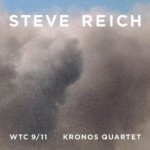
JM: I’m excited that we’ll be hearing your new piece “WTC 9/11” performed here at UC Santa Barbara. For people who are unfamiliar with that piece, could you give a quick overview?
SR: Let’s see. There’s my personal involvement, and then there’s the piece itself. What shall we begin with?
JM: How about your personal involvement?
SR: For twenty-five years we lived four blocks from Ground Zero. We went shopping there, it was part of the landscape that we lived in. On September 11th, 2001, my wife and I were in Vermont, but my son and my granddaughter and my daughter-in-law were in our apartment four blocks from Ground Zero. And about 8:30 in the morning our phone rang – it was our son saying, “I think they bombed the World Trade Center again”, because they’d bombed it in 1993. From our window you couldn’t see it, because there was a building close to us that blocked it out, but he could hear it and feel it. So we all turned on our televisions just in time to see the second plane hit. I told him “Don’t hang up”, and “get some hardware store masks” that we had in the bathroom and “put them on the baby and yourself and your wife”. We had double windows – “Make sure all the double windows are closed. And don’t leave.”
We had a neighbor who was a very together guy. I knew he had a vehicle. And to make a long story short, we kept the phone open, in touch until about 4:00 in the afternoon when my son and my granddaughter and my daughter-in-law all got together with our neighbor and into their vehicle. They couldn’t go on the West Side Highway or the East Side Highway, but this guy knew the city very well, and via the streets got out of the city up north to Westchester where his mother was. We drove down from Vermont, picked up our son, granddaughter, and daughter-in-law, and for months we had to stay up there because we lived below Chambers Street, and the US Army said that no one goes below Chambers Street for thirty days.
So that in a nutshell was my personal involvement.
Now shortly after that, people like yourself would ask me, “Are you going to write a piece about that?” Because they knew I’d done pieces like “Different Trains” and “The Cave”. At the time I was working on “Three Tales”, finishing up “Three Tales”, the video opera that uses an enormous amount of samples, and my wife was working with the video. And I said, “Frankly, I have no time for that right now, and I have no ideas about it, so the answer is ‘no’.”
OK, now cut to late 2009, early 2010, [violinist] David Harrington called me from the Kronos Quartet, and said, “Steve, I’d like you to write a third piece for us, and we’d like you to use speech again.” And I said, “For you, David, anything.” And I meant it. I love Kronos, and they’re one of the few people whose suggestions for a piece I will take seriously. But to be honest, I had no idea what the content of that piece would be. The only idea that I did have was a formal idea, and that was that whoever was talking, whatever they were talking about, their final syllable would be extended out via software as a held tone, which could then be doubled by viola, or violin, or the cello, or what have you. So, “He came from Bostonnnnn…”, that “n” could be held out indefinitely, doubled by the strings, and then the next speaker is joined to the previous speaker by doing the same thing. You begin building up chords of meaning, if you like, and connecting one speaker to another harmonically. So this idea existed quite independently of any content for quite some time, and I was really concerned, you know – what am I going to use for material?
And then, I guess it was about a month or two later, the lightbulb went on in my head, and it was like a brilliantly illuminated lightbulb, which said, “What else? I mean, I have unfinished business. And that’s 9/11”. Once that thought popped into my head, I knew exactly what I had to do, and I went about doing it. Which is to record those people who were directly involved in 9/11, and that starts with the air traffic controllers who noticed that American Flight 11 was going south when it should’ve been going west to L.A., when it started out in Boston. And then the New York City Fire Department, who records everything that goes on as field comm, field communications – and of course the New York Fire Department was the principal people involved, and the heroes of that time were largely made up of firemen, many of whom did not survive on 9/11.
That material comprises the First Movement of the piece, doubled by the strings – the speech melody of the speakers becomes the melody of the strings. There are also the sounds of the background. They are very noisy recordings, because the air traffic controllers are, again, being recorded over their own system. It’s very low grade recordings, and that noise is part of the texture of what’s going on. That noise and confusion is emblematic of the reality of 9/11, for the people who were in it. That’s the First Movement, very short, only three and a half minutes.
The Second Movement is made by recordings that I made myself of my friends and neighbors who lived in close proximity to the World Trade Center, remembering, now nine years later in 2010, what they did that day. So, for instance, David Lang, my friend the composer, who was in Soho, said “I was taking my kids to school”, and goes on to elaborate what happened from there. Many others are also reminiscing about what happened to them that day. And that is the Second Movement, which is a bit longer.
The last movement is quite a bit different. After 9/11, there weren’t too many bodies, as you may know. The fires were very intense, and what bodies that there were, and largely the parts of bodies, were taken to the Medical Examiner’s office on the eastside of Manhattan, in the East 30’s. There’s a law in Judaism which says that when someone dies, you don’t leave the body alone from the time of death until the time of burial. Now, when this happened in 9/11, a number of synagogue members from the Upper West Side started coming down to the Medical Examiner’s office – this is called “sitting shmira”, you’re accompanying the… sitting there, usually reading psalms, chanting psalms, singing parts of the Torah that are appropriate to that situation, 24/7, around the clock.
Now as you may know, on the Sabbath, from sundown Friday to sundown Saturday, you can’t take a subway or a bus, or use money, or carry your wallet, or any of the kinds of things that are necessary to move around Manhattan. So they started looking, very quickly, for Jews who were in the area, who were close to the East 30’s, and they found women from Stern College, which is part of Yeshiva University, who were very anxious to volunteer for this, and in fact did. These women would walk over on the Sabbath and sit there next to refrigerated trucks and say psalms, chant psalms, sing parts of the Torah. And I was able to locate two of them. As a matter of fact, one of them used to be president of Boosey & Hawkes, my music publisher. When she left the company she became a lay chaplain for Columbia Presbyterian Hospital, and she volunteered to do this during 9/11. And you hear their voices in the Third Movement.
You also hear the voice of Maya Beiser, the cellist who I’m sure you probably know of, who is an Israeli whose mother recently died, and she went back to Israel for the funeral and the burial. She sat shmira and played cello for her mother before her burial. And I told Maya what was going on, and I said – I knew she had a beautiful voice – “Would you sing the end of Psalm 21?”, and she said, “I would be happy to do that.” You will hear her voice, sort of mixed back into the mix, very quietly, singing that psalm. Then you’ll hear the voice of one of the best cantors in New York City, from an orthodox synagogue, chanting parts of the Torah. It’s called The Wayfarer’s Prayer, it comes from Exodus. Those again are mixed very quietly in the background, behind the strings.
At the very, very end, though, David Lang says, “The World To Come. I don’t really know what that means.” “WTC” has at least two, perhaps three meanings, which again David made me aware of. One of them is “the World Trade Center”, the second one is “The World To Come”, which in Hebrew is “Olam Haba”. And, of course, we really don’t know too much about that. The singing at the end is very meditative and sort of suggests that atmosphere, but I felt that that was not an appropriate ending given what has happened since 9/11, which has been more of the same. So the piece ends, and goes back to the beginning.
I forgot to mention, at the very beginning of the piece, when I was beginning WTC 9/11, I was going into the shower in the morning, and my phone was off the hook and I didn’t know it. This was a landline. It began to beep that very insistent warning beep, like “your phone’s off the hook, please hang it up”. I thought to myself, “Eureka, that’s it! That’s how I want to begin this piece.” It turns out that beeping is in ‘F’, and so the piece begins with David Harrington doubling [laughs] a beeping telephone, and then John Sherba coming in with the ‘E’ below that. And that’s what happens at the end, that beeping comes back on, that warning returns and then David Lang is quoted as saying, “and there’s the world right here.” And that’s the end of the piece.
JM: Wow, sounds great.
SR: I think it is. It’s very short, very compact. I mention in the program notes that I thought, when I began the piece, that it would be a large piece, twenty-five minutes long. But when I finished the First Movement, it was three and a half minutes long, I thought to myself, “My goose is cooked. What is this?” So I called up David Harrington, and I said, “David, I don’t think that this is going to be a twenty-five minute piece. It just wants to be terse. It wants to be compact. It wants to be to the point, and then that’s it.” And that’s exactly what happened. Sometimes the piece tells you, the piece tells me, “This is what I have to be. Don’t mess with me.”
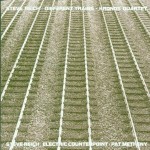
JM: Could you compare this to your piece “Different Trains”, which is also on the program, and seems to share some compositional similarities?
SR: Well, they certainly share the similarity of using pre-recorded voices, and using the speech melodies in the voices. That, of course, is the obvious similarity. They’re both about darker subject matter, although the first movement of “Different Trains” is very upbeat. It’s America before the war. It’s American train whistles, which are basically perfect fourths or fifths.
In the Second Movement, when the Holocaust survivors’ voices are there, of course it shifts to a much darker tone. There are air raid sirens in the background.
“Different Trains” is a longer piece. There’s more string development. “WTC 9/11” is weighted heavily on the voices, and the strings are essential but they don’t elaborate independently and go on at any length. I think that does happen in “Different Trains”.
They’re very different pieces, but, of course, yes, there is that similarity.
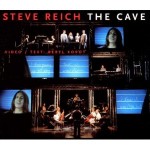
JM: The program also includes selections from “The Cave”. Were you involved at all in deciding which parts would be performed?
SR: Yeah, they’re taking basically the end of the First Movement, and that definitely was something that was put together as a possibility to be done as an excerpt by a string quartet and tape. The remarkable thing is that the last three or four sections at the end of Act One of “The Cave” is inside the cave. It’s not really a cave, it’s a mosque that’s been put on top of a church [laughs] that was put on top of Herodian walls, that was put on top of a cave [laughs]. It’s a very large room and so you have kind of a resonant frequency in the room, a hum in the room from all the voices and because of the architecture of the room, as in any large room. It’s A-minor, actually, that the room is tuned to. When I recorded inside the Cave of Machpelah, the Me’arat ha-Machpela, there is this sort of droning sound of ‘A’. And that was reinforced by a sustained ‘A’ on the cello, and then you hear the murmuring of these voices, and then the other strings join in very, very quietly.
The remarkable thing is that that happens, and the piece ends very, very quietly, and when you get to the Third Movement of “WTC 9/11” you feel like you’re back in the same world. I’m describing a very quiet section of the voices singing psalms and The Wayfarer’s Prayer against very quiet string accompaniment. There’s this link.
I want to say, this program is a unique program that Kronos put together, of all the pieces that I’ve written for them and this excerpt from “The Cave”. Of course, there’s also “Triple Quartet” which is, I think, one of my better pieces and probably stems from Bartok – the end of Bartok’s Fourth Quartet is a primary inspiration. They’re all… you know, the string quartet is a weighty medium [laughs], whether you like it or not. You can’t write for string quartet and not think of the late Beethoven quartets. When I went to school I spent an enormous amount of time listening to and analyzing the Bartok quartets, particularly the Third, Fourth, and Fifth. So those pieces are amongst the darker pieces that I’ve written. To hear them all on a program… when I first heard it, which was at Duke University when we did the world premiere of “WTC 9/11”, I was really struck. I mean, I felt like I learned something about myself I didn’t know.
At Santa Barbara, I’m very glad that Kronos is doing this. I hope that they get a chance to do it a lot, and I hope that they can make a recording of this. Because it gives a very, very different impression than, let’s say, the stand up and cheer ending of “Drumming” or a lot of the pieces that are percussion heavy. It may be a bit of a surprise, or a revelation or disappointment perhaps [laughs], depending on who you are.
JM: Almost all of these pieces that you’ve discussed involve pioneering interactions between music and technology. And of course, that goes back to your earlier years when you used tape machines, you had the phase shifting pulse gate, and so on. Could you comment on your approach to and your relationship with technology when it comes to your compositions?
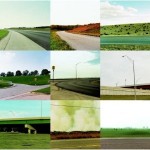
SR: Well, “Triple Quartet”, you should know, is often played live with twelve players. It’s very good that way. As a matter of fact, it’s probably better that way. Of course, when Kronos plays it, they play it marvelously. It is often played with twelve players. And so tape functions in “Triple Quartet” basically is a matter of convenience so that a string quartet can in fact play it, and there are many string quartets and so therefore it is worthwhile having the tape.
“Different Trains” was a real line in the sand for me, in terms of my own work. I first came to public attention for “It’s Gonna Rain” and “Come Out”. “Come Out” was the first piece that was actually commercially recorded, way back in 1967. The piece was composed in 1966. And of course, it’s just the recording of a black kid’s voice that was arrested for murder – he didn’t do it, by the way. That came to public attention, I was thirty. It wrapped up in the technique of phase shifting that was used exclusively in both “It’s Gonna Rain” and “Come Out”. But I felt at that time, I felt like I was sort of trapped, because I felt people couldn’t do that [laughs]. Windshield wipers on a bus could do it, and warning bells at a railroad crossing could do it, tape recorders can do it, but people can’t do it. Well, finally, it took six months of torturing myself, I finally said, “I’m the second tape recorder”. I sat down with a tape loop of the pattern that later became “Piano Phase”, and so here I go. I start out in unison, I’m going to move slowly one sixteenth note ahead of the tape, and I found to my amazement, wow, I can do it! What’s more, doing it is really interesting. It feels good, because I’m just listening. I don’t have to read to do it. And I’m not improvising. I know what I have to do. That led to “Piano Phase”, and other pieces, and up to “Drumming”, and after that I stopped that technique.
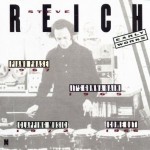
Then, all this time… “Come Out” in 1966 all the way up to 1988 “Different Trains”… prior to “Different Trains” I heard lots of things, like Laurie Anderson’s “O Superman”. It starts off with a tape loop. I thought, gee, a lot of people have used what I have done to create different things, what can I learn from what I did? Why not, instead of making it just like music, you know, pre-recorded speech as sounds, why not actually make it music, join it so every time a man speaks the cello doubles him, and every time a woman speaks the oboe doubles her.
I had been commissioned by Betty Freeman, who’s no longer with us, to write a piece for Kronos. Kronos was really coming up in the world in 1988, and I had just become aware of the sampler, and I was very excited to use it in a piece of music, and this seemed like a golden opportunity. So “Different Trains” was the first piece to join speech and music together in this way, and also the sounds of the trains themselves. It was like a mark in the sand for me, both going back and going forward, and it also suggested…
During the time that I was doing “Different Trains”, around the late-80’s, I would get occasional telephone calls from Europe asking me, would you write an opera? And I would say, “Well gee, I’m very flattered, thank you so much, but ‘no’. I’m not interested.” I mean, a lot of my contemporaries were writing operas, obviously, and they felt why not me? The answer was that the operatic voice did not attract me, the form does not attract me. So if you feel that way, you don’t want to take three or four years to work on a project [laughs] you don’t believe in. That’s kind of committing suicide in public.
So, I hang up the phone and I think, gee, isn’t there something that I could do along those lines? Suddenly the lightbulb went on. In this piece, in “Different Trains”, I’m hearing the people speak. What if you were working with a video artist, and there was videotape involved? I mentioned this to Beryl Korot, my wife, and she was doing other things at the time. I said, how about we just make some tests? And we did. We did some tests doubling the speaking voice with a synthesizer that happened to be at hand, and we thought, wow, this is definitely interesting. So out of that came “The Cave”, and then later came “Three Tales”, two video operas of different sorts. So, one use of audio technology suggested the use of video technology.
For “WTC 9/11”, I told you, the first idea I has was the idea of sustaining… Have you ever gone to the movies and you see a freeze frame, the action just stops? What I wanted to do was to make the synced soundtrack of that. So you’d say “zerooooo…” It would just prolong itself. Well, on tape that’s utterly impossible. You stop the tape and the sound stops. You slow it down, [voice drops] you sound like Darth Vader. By the time I did “Three Tales”, and “Dolly” the last movement – it was the last act – it was possible to do that. There is that stop action sound in “Dolly”, but there is so much going on, you don’t really hear it clearly. In “WTC 9/11” it’s front and center. It’s the texture, the connective tissue between one section and the next.
So yes, technology plays a role, but also the harmonic world of “Different Trains”, and the harmonic world of “WTC 9/11”, and the harmonic world of “Triple Quartet” are all quite different from the harmonic world of, let’s say, “Music For 18 Musicians”. And I think again, that’s because Bartok for me is very present when I think about a string quartet. The subject matter was such that a different kind, a darker if you will, more chromatic harmonic world arose on truly musical grounds because of the instruments, and the tradition that those instruments have, and the nature of the subject matter of the piece.
JM: You might be interested to know that at the exact same time as the Kronos Quartet performance here at UC Santa Barbara, there is another concert in Santa Barbara by Radiohead.
SR: [laughs]
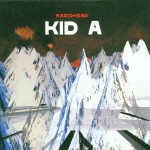
JM: Can I ask for a preview of what we can look forward to for your work-in-progress “Radiohead Rewrite”?
SR: No, it’s called “Radio Rewrite”. There are remixes, which are by people who work in audio, and they take recorded music and they do what they want to do with it. I’m a composer, I work in notated music. By the way, I think it’s a good distinction. Instead of pop and classical, think notated and non-notated. I work in notated music.
“Radio Rewrite” – it arose because I met Jonny Greenwood. Actually I met him on the phone way back when I did “2×5”, the rock piece. But I met him in person in Krakow, Poland last September when he was doing his version of “Electric Counterpoint”, a piece I wrote for Pat Metheny. He made it on tape. I knew about him. I knew that he had been a violist at Oxford, and then he joined the group, and he’s still composing. He did the music for There Will Be Blood, which you would never think was written by a rock musician. I had a very, very, very good time meeting him and talking with him while I was there, and it encouraged me to listen to more Radiohead. I was working on some other project which was not going well, and I just was really up to there with it, just wanted to trash it. Two songs struck me – one “Everything In Its Right Place” from Kid A, and the other one is “Jigsaw Falling Into Place” from In Rainbows. I thought, I’d like to take those two songs, and then do I know not what with them, i.e., I’m not going to make recognizable variations on them, but I will use the harmonies that make up the two of them, and I will use fragments of the melody here and there.
It was an exciting prospect, and it gave me the energy to get going, which is the crucial thing when you’re beginning a piece. I have finished two out of five movements, and I’m working on the third. It’s due for premiere by the London Sinfonietta. It’s not scored for rock musicians at all – there are only a handful of rock players who can read, and they were the people who played in “2×5”, and there are others now, and there will be more. But it’s written for the London Sinfonietta. I mean, it’s written for flute, clarinet, string quartet, two percussion, two pianos. It will be premiered by them in March of 2013, and Alarm Will Sound is the co-commissioner in this country, and they will do it out at Stanford also in 2013, I believe in March also.
JM: Do you hear any Steve Reich influence in Radiohead’s music?
SR: Uh, you’ve got to ask them about that. I know that Jonny Greenwood is very interested in Penderecki, but I mean he did play “Electric Counterpoint”. I’ll leave that for others to judge.
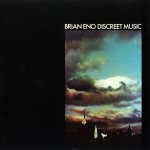
JM: One artist who has acknowledged your influence is Brian Eno. Have you followed his work at all?
SR: Yes, well as a matter of fact he and I had some meetings to discuss a project which we hope to do. I’d like to see him produce “Drumming”, but there’s financial considerations which have made it impossible for the time being. He’s a remarkable… very, very interesting… [laughs]
When I was a kid, when I was fourteen, you know, when I was in high school, I used to go to Birdland to hear jazz, to hear Miles Davis and Kenny Clarke and Bud Powell. Then when I was in Julliard, I went to hear John Coltrane. When I was studying with [Luciano] Berio out on the West Coast at Mills College, I went to hear John Coltrane. And that had an enormous influence on me.
I remember, now cut to 1974, my ensemble was performing at Queen Elizabeth Hall in London, and after the concert a guy comes up, long hair, lipstick, says, “How do you do? I’m Brian Eno.” And I think to myself, “poetic justice”. I’m here listening to Miles Davis, and he’s listening to me. That was a very good beginning.
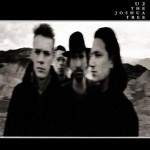
We really haven’t had that much to do with each other. I do admire his work, not only his own stuff. He has a touch as a producer that makes remarkable recordings. The beginning of “Where the Streets Have No Name”, from the U2 Joshua Tree album, is absolutely amazing. I can’t but believe that that’s entirely Eno’s thinking.
So yes, he’s a remarkable musical presence, and appears in many roles as producer, composer, and just general influence on a lot of people.
JM: You mentioned some of your influences coming from jazz. Have you ever had any influence from the world of rock music?

SR: Not really. I mean, I would say maybe when I was first getting into this whole neck of the woods musically… As I mentioned, John Coltrane, particularly Africa/Brass, is half on hour on ‘E’, the low ‘E’ of a double bass. That was unheard of. But that was something that was in the air, and since it was in the air it also appeared in Motown. I remember Junior Walker, he was a saxophone player on Motown. He did a tune called “Shotgun”, I think it was back in 1964, which basically has a repeating bass line. This goes throughout the whole tune. It’s not A-B-A. It’s just A, all the way.
Of course then it was also Balinese gamelan, which was something that I was studying and listening to on recordings, and actually performing as a student out on the West Coast. And African drumming which I did in Ghana, and here in the States. All of these musics…
I was also interested in Perotin, and Leonin, and the school of Notre Dame from the Twelfth Century in Paris. It’s called organum, basically taking the notes of a Gregorian chant and elongating them to enormous lengths, and then putting decorative voices over these held, not drones, but long, long tones.
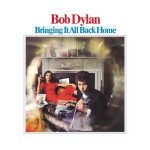
So it’s basically all these different sources – organum, Junior Walker, even “Ain’t gonna work on Maggie’s Farm” [“Maggie’s Farm”] by Bob Dylan, where it’s basically all the tonic, with a quick turn around back to the tonic. Harmonic stasis. Harmonic staying put. It’s there. It’s there in Coltrane, it’s there in Bali, it’s there in African music, it’s there in “you ain’t gonna work on Maggie’s Farm no more”, it’s there in all these different sources. And that’s why this kind of music arose in America in the middle-60’s. Because it was in the air. People like myself, [Terry] Riley, and La Monte Young, Philip Glass, and much later John Adams, and quite independently on another part of the globe Arvo Part. If you have your antenna up you get the signal, and something happens.
JM: You had mentioned using sampling technology in your own work. How do you feel about your own music being sampled?
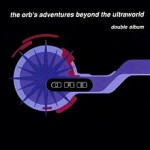
SR: I’m actually glad to see it happen. I remember being interviewed in the early 1990’s in London by one of these pop keyboard magazines, and they said, “What do you think of The Orb?” And I said, “What’s The Orb?” They said, “You don’t know?” And I said, “No I don’t.” They said, “Well, you should know.” And they gave me a CD, and I took it home, and there’s “Little Fluffy Clouds” and they’ve got about thirty seconds of “Electric Counterpoint” from Pat Metheny in the piece. I knew that I’d had an influence maybe on Eno, and also perhaps on David Bowie and “Weeping Wall” – he was at the premiere for “Music For 18 Musicians” in Berlin. But I was totally unprepared for the whole sampling phenomenon, when my music wouldn’t an influence, it would be a presence [laughs]. But it didn’t occur to me to sue them. I guess it all worked out.
More people are doing that. In 1996, my ensemble was in Tokyo performing “Music For 18 Musicians” and “Drumming” and the young man who ran Nonesuch in Tokyo, Hiro Nakashima, at the time, said “you”, meaning me, “ought to have a remix album”. At that point I kind of knew what he meant, so he in Japan and a woman in the U.K., Amy Coffey, and David Bither in New York all approached different DJs saying, “Would you like to remix a piece by Steve Reich, and here are the pieces that are being proposed.”
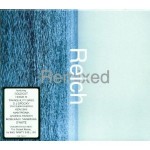
I began getting CDs and DATs and what not, and between those people and myself we worked out the contents of what became Reich Remixed. And people would ask, like you just said, “What do you think?” I said, basically, I feel great. Because here are people that honestly I’ve never met in my life. I didn’t know them at all. They didn’t know me. They probably weren’t born in 1965 when I did “It’s Gonna Rain”. And they find that piece and others a real interest. It’s genuine – you’re writing a piece for online, right? – you want people to read it, and if they see you, to say, “Hey, interesting piece. You did good. Congratulations.” If they’re on the street, and they don’t even mention it to you, you’re gonna feel it’s wrong. I’m the same way. I write music, and I want the people to listen to it. And if musicians listen to it, and musicians who I don’t even know, who are in another part of the musical universe, so to speak, well, I feel great. It’s out there, people are listening to it because they are genuinely attracted to it. I think any composer basically wants that for their music. So that is very satisfying.
[JM tells SR that in the 90’s he did a recording in which he played an excerpt from “Six Marimbas” in the one channel, a delayed copy of the same excerpt in another channel, and played improvised guitar over it.]
SR: As a matter of fact, some group just came – I forget the name of the group – but they’re going to use “New York Counterpoint” as an ostinato. So it’s still happening.
JM: I know that the story isn’t over, but how do you see your legacy?
SR: [laughs] Well, I’ll leave that to others. I’m working on “Radio Rewrite”, then I have other pieces lined up to do after that. So I’m basically focused on what it is that I have to do and what’s coming up next. The rest is for other people to decide.
JM: What advice would you give to an aspiring composer or musician?
SR: To the aspiring composer, the advice that I would give you is be around a community of players. Don’t be sitting around a classroom talking about music, analyzing music. Go where there are lots of players and where you can write a piece and get it played, and write another piece and get it played, and learn what works and what doesn’t work.
And also, if you can, get involved in performance. I had an ensemble for forty years – we’re now on hold because I really can’t take the responsibilities of being a bandleader – so when I travel around now I coach, and I sometimes sit in for certain pieces that can be done easily, like “Clapping Music” or something like that. But, you know, my ensemble was a very active presence, and lots and lots and lots of recordings were made, and we still occasionally play together, I mean with individuals. I just played with Russell Hartenberger at Ohio State about a month ago.
So get involved, I would say to them. Get involved in the performance of your own music. If you play an instrument, play an instrument. If you conduct, conduct. If you program a drum machine, program a drum machine. But get involved on a practical level.
Another thing, if you write a piece, make sure that it gets played. And hopefully it gets played more than once, because if you write something that’s not worth playing more than once, then you better write another piece fast.
JM: You’ve already mentioned a few of your plans of what is coming in the future. Anything else that you want to mention?
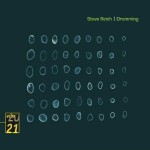
SR: There’s a piece for two percussion and two pianos, following “Radio Rewrite”, that’s aimed at the percussionist Colin Currie, who is, I guess, the greatest percussionist of our day. He travels around the world playing concertos, but he’s also a fantastic organizer of groups. The Colin Currie group plays “Drumming”. These are top players in the U.K. I heard them do it, and it just knocked my socks off. It’s great to hear players that you don’t know, who end up doing a performance that I wish we could’ve been able to do. It’s better than anything my ensemble ever did. It’s very gratifying to see another generation of younger players come along, who get the music, and play it. Not just play the notes, but really play the music. So I am feeling very fortunate, and I’m very thankful for that.
JM: Is it correct that I’m reaching you at your home in New York?
SR: Yes, we live about fifty miles north of New York City. We left the city in 2006. I was in New York for thirty years with earplugs in my ears, and I finally was able to relieve myself of that burden. I’m looking at grass and plants and birds and trees, and not garbage trucks and cement.

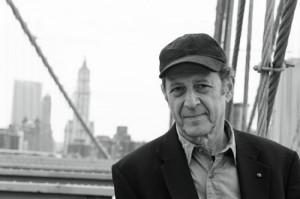
Discussion
No comments for “Interview: Steve Reich”